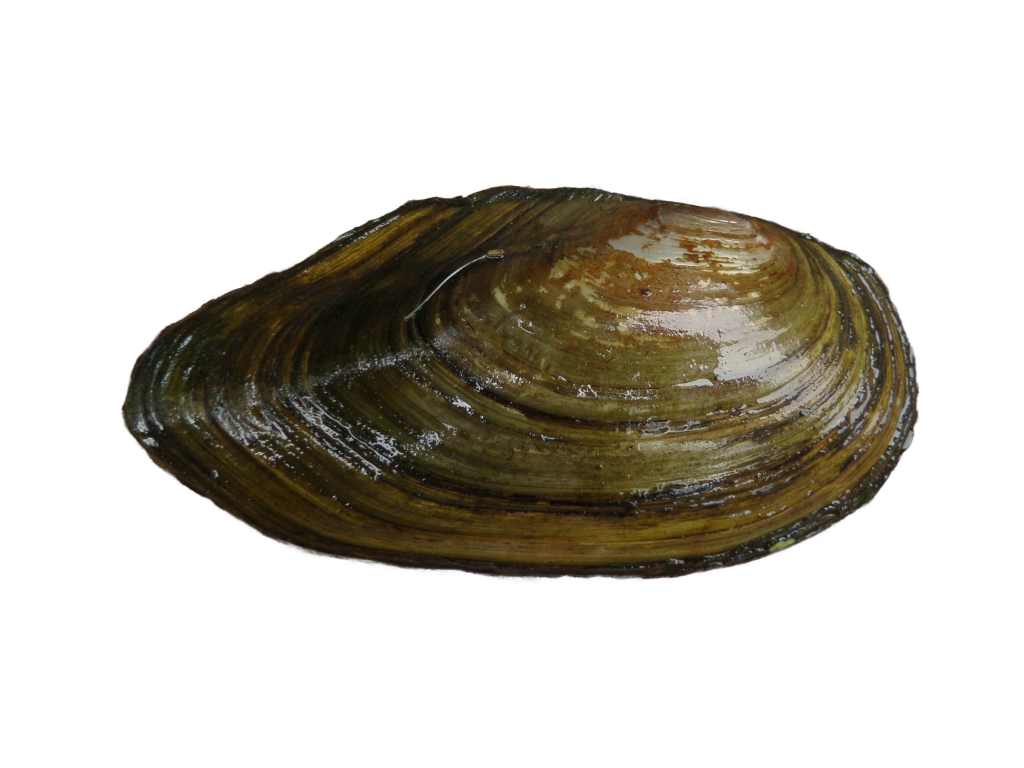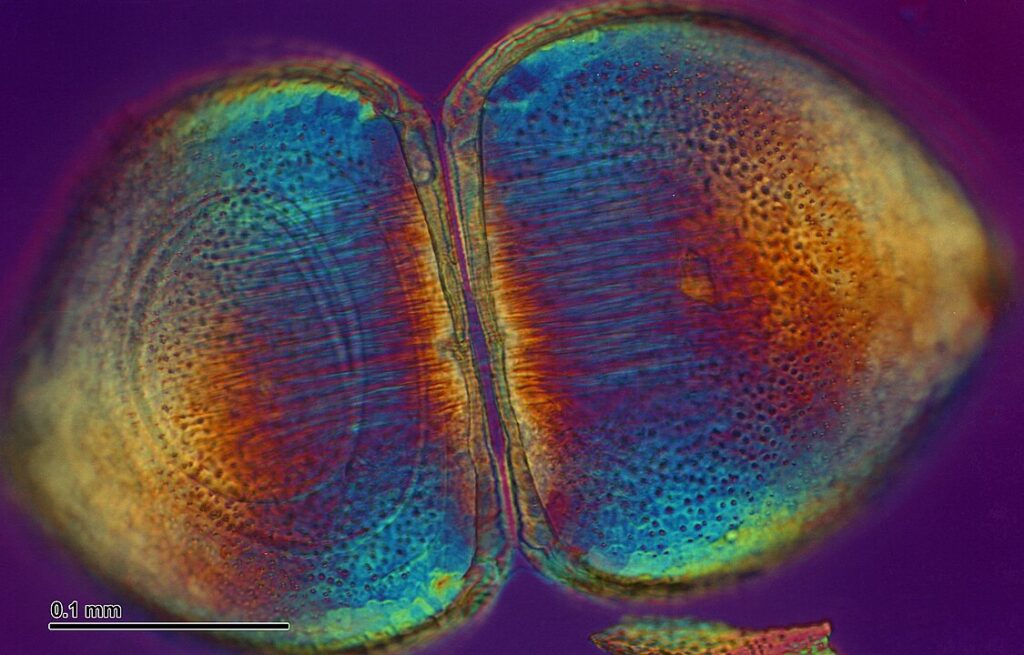Swan Mussel
Anodonta cygnea

The larva is a parasite on fish
The life cycle of the swan mussel is very exciting! It begins its life as a larva in the open body of water. The larva attaches itself to the gills of a fish, and spends its initial period as a parasite on the fish. There it eats mucus from the skin of the fish, but without doing much harm to its host. It is not yet known exactly how many different species of fish the larvae of the swan mussel may use as hosts, but so far the larvae have been found on perch, common dace, ruffe, common roach, common bleak and salmon!
By being a parasite on fish, the swan mussel larva not only gets access to food, but it also has a perfect means of transport for moving great distances! When the larva has grown sufficiently and the host fish has reached suitable waters, the swan mussel detaches from the fish and finds its way to the bottom. It spends the rest of its life as a bottom-dwelling mussel, filtering out organic matter such as plankton and dead plant parts from the water.

Photo: Doc.-RNDr.-Josef-Reischig-CC-BY-SA
Digging itself deep into bottom sludge
The swan mussel is Sweden’s largest species of freshwater mussel. It lives in nutrient-rich lakes, ponds and slow-flowing streams. It often lives deep in the bottom sludge, where it can form large colonies. In order for the swan mussel to thrive, the water not only needs to be nutrient-rich, but it must also contain high levels of oxygen.
So far, the swan mussel is not threatened with extinction in Sweden, but in several other European countries it is on the Red List. The threats to the species include the excavation of watercourses, reduced numbers of fish and the draining of the watercourses in which the mussel lives. In addition, environmental degradation such as eutrophication causes the oxygen-rich bottoms that the pond mussel needs to disappear at a higher rate.
Most often, the swan mussel lies almost completely buried in the bottom sediment, filtering plankton from the water.
Photo: Alexander-Mrkvicka-CC-BY-SA
An empty shell of the swan mussel
Photo: Michel-Langeveld-CC-BY-SA
Distribution in Sweden
From Skåne north to Uppland, less common in western Sweden.

Threat based on the Red List

Trade regulations
CITES: Not listed.